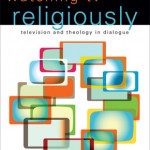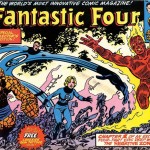Pop Theology contributor Richard Lindsay provides a review of a collection of one of the most (in)famous film critics of all time, Pauline Kael.
If ever there was a book that made me feel I should take a hatchet to my word processor and never write again, Movie Love: The Complete Reviews of Pauline Kael, 1988-1991 is it. Purchased in a garishly lit bookstore on Sunset in West Hollywood where they sold everything from porn to the Catholic Catechism, the $2.99 I spent on this scruffy paperback of Pauline Kael’s latter film reviews has brought me more pleasure than any other product I could have bought from such an emporium.
Like sex (and the Catholic Catechism) certain writers, artists, and films, are found anew each generation while the older folks smack their heads and go, “You just discovered that?” (Ryan Parker’s and my mutual obsession with Mad Men has led me to Time Out by Dave Brubeck, and the disc has barely left my car CD player in recent weeks.) During her twenty-four years at the New Yorker, Kael became the lioness of film reviewers, revolutionizing the field and securing a place for criticism as art.
The book is the perfect introduction to Kael’s work because I know these films. I grew up with them. In retrospect, the late 80’s and early 90’s were not the film industry’s most stellar era. Movies that would have been told in a simpler style in a simpler age were ruined by the bombast of blockbuster. Only the eighties could have turned the tragic/triumphant story of 1964’s Freedom Summer into the self-righteous violence of Mississippi Burning. And as Kael writes of one notable director’s overkill in Always: “Was there no one among Steven Spielberg’s associates with the intellectual stature to convince him that having cried at A Guy Named Joe when he was twelve was not a good enough reason for him to remake it?” Well, no. But somehow I don’t think intellectual stature or lack thereof is what moves Spielberg.
There’s only one great film from this era reviewed here (GoodFellas), several forgotten movies that have stood the test of time as good films (My Left Foot, Casualties of War), and a few that have become cult classics (Heathers, L.A. Story). But my inner early adolescent thrills to recall with Kael the formative films of my life, including Batman, Dead Poets’ Society, Edward Scissorhands, and the Back to the Future, Indiana Jones, and Ghostbusters series.
The incredible literacy and background Kael lends to this schlocky era is enough to put us Internet scribblers to shame. Her Batman review brings in references to Frank Miller’s The Dark Knight Returns, classic American films like The Hunchback of Notre Dame and The Phantom of the Opera, the German fantasy film about angels, Wings of Desire, and the horror classic, The Man who Laughs. Apparently, Michael Keaton was better than Jack Nicholson in Batman. Not to my teenage eyes at the time, but Kael is so convincing it makes me want to go back and watch the film again.
Her review of Dead Poets’ Society brings out a long-held suspicion that the film was good in an earnest, middlebrow sort of way, but over-directed—the intense, camera-as-character style leaving its young stars, “without a zit to call their own.” (*Sigh*… Pauline, camera-as-character would only get worse.)
She pinpoints Ghostbusters II as the better sequel than Back to the Future II. And I have to agree with her. For some reason I missed the second Ghostbusters, but viewing it on Netflix, it has much of the same charm and humor as the first. (This doesn’t excuse a Harold Ramis interview I heard on Fresh Air years later where he whined about the film not being as successful as the first. It only made 112 million dollars domestically.) Future II as she calls it, feels like an “assembly line.” “It doesn’t have anything like the first film’s what-the-hell Oedipal humor… The inventiveness is fast and furious, but low in spirit. Inventiveness has become a formula.” Thank God Pauline never had to review the desolation that would be wreaked on narrative in the CGI age.
She disagrees with me on the greatness of Goodfellas, suggesting for all of Scorcese’s whiz-bang artistry, the characters and story feel shallow. The characters may have been shallow as people, but not as characters. They were completely memorable, as anyone who’s riffed on Joe Pesci’s “funny like a clown” line could tell you. What Scorcese did in this film was bring gangsters out of the Godfather’s operatic mahogany mansions and into the suburbs. He made them more like people we know – and paved the way for suburban mafia like The Sopranos.
Her enthusiasm for films is infectious, if at times it carries her away: “There may be no more romantic flight of imagination in modern movies than the drive that Vicki and Batman take, by Batmobile, rocketing through a magical forest.” And in another review, “I doubt if the acting in American movies has ever been as good as it is right now.” She goes on to congratulate Tom Hanks for his role in Turner and Hooch.
But even if some of the films haven’t stood the test of time, her reviews of them have. She tosses off a prose style that sounds breezy but sophisticated, skimming the shallows and plumbing the depths; she reaches out and smacks you with lines that resound with a comic-book Pow! Dustin Hoffman’s character Raymond in Rain Man is “accepted [by the audience] as a harmless, endearing alien—E.T. in autistic drag.” Of Indiana Jones and the Last Crusade she writes, “For a while in the twenties and thirties, art was talked about as a substitute for religion; now B movies are a substitute for religion. (The pulp adventure is the Grail. Connecting with your dad is the Grail.)” And discussing Kevin Costner’s actor-director turn in Dances with Wolves: “This epic was made by a bland megalomaniac. The Indians should have named him Plays with Camera.”
Kael pioneered this high-brow/low-brow sweep in the 1960’s, particularly with her groundbreaking essay, “Trash, Art, and the Movies.” After Kael wrote in 1969, “Why should pleasure need justification?” and “Trash has given us an appetite for art,” critics could no longer hide behind the façade of high art. Whether reviewing Mozart or the Muppets, after Kael, critics had to pitch to the level of the mass-produced cultural candy that Americans gobble up like junk food. It changes the palette for everything else.
In her seminal essay on trash and art, Kael brings up the conflict between older viewers who’ve seen it all and “the young who are seeing it all for the first hundred times.” This makes one of her reviews in Movie Love stand out all the more for me: Brian DePalma’s Casualties of War.
I wasn’t allowed to see rated R films as a kid, in part because of my Christian upbringing, in part because of my sensitivity to violence. At a band party my sophomore year in high school someone decided to watch Casualties of War. On Betamax. Because movies about Vietnam War atrocities apparently make good party viewing. I never sat through a more tortured two hours in my fifteen years of life, the horror of what played out on screen competing with my desire to be accepted, competing with the feeling I was doing something I thought my parents disapproved of, even if they would never know.
It wasn’t as if this movie was even something naughty and fun like Meatballs or Porky’s. Casualties of War, starring Michael J. Fox and Sean Penn, is an account of the abduction, rape, and murder of a Vietnamese girl by five U.S. soldiers. It was based on the true event recounted in a searing article by Daniel Lang in The New Yorker in 1969.
What strikes me in reading Kael’s review is how much I remember of the film twenty years after viewing it once—and how much Kael’s shock at the film mirrored my own. I remember, with Kael, the helicopter scene in which a dying soldier is flown out of the jungle after a firefight, “the yellow-green river running beneath him suggests being so close up against a painting that it’s pure pigment.” I remember the taking, beating, and violating of the Vietnamese girl. Kael describes the kidnapped girl’s difficulty breathing through her bloodied nose with her mouth gagged, and that detail is seared into my brain as well.
Michael J. Fox plays an idealistic soldier, Eriksson, who objects to what his squad-mates, led by Sean Penn, are doing to the girl. He doesn’t participate in the rape, and has a brief, agonizing, opportunity to help her escape, which he fails to do. By the time they have killed the girl and returned to camp, Eriksson’s comrades recognize what a risk his conscience poses to them, and they try to frag him with a grenade as he sits on the latrine. Eventually, he brings charges against the men and they are convicted in a court marshal. But no justice can be done in such a situation, either for the dead girl and her family, or to assuage Eriksson’s guilt.
The film exposes the frailty of innocence and idealism, and the sometime impossibility of doing the right thing. Eriksson is not able to be a hero in this movie, the horror of the situation has made that role unavailable. Kael relates her own story of walking in New York and seeing a small child being abused by his father, and her feeling of helplessness as the child’s wails followed her down the street. Seeing the film as a sheltered kid, the agony of being able to prevent a horrific wrong was new to me. American kids of a certain race and class are taught they can always be the hero of their own story, and I’m sure having that illusion challenged is why the Michael J. Fox character resonated with me.
We finished that day at the band party by watching The Burbs, another early Tom Hanks disaster, moving seamlessly from wartime horror to late eighties absurdity. Kael was right—whatever movies aspire to be as art, they are frequently treated as a diversion, as trash. It doesn’t mean they don’t crawl under your skin. A teenage party seems like an inappropriate setting for Casualties of War, but what is the right setting? Someone shows you a movie about the horror and injustice of war, and there sprawled out on the beige carpet, in the midst of flat Pepsi and bean dip, next to two horny kids making out, your world is taken up and shaken and your whole perspective is changed.
I remember going home and wanting to watch something, anything, to clear that film out of my head. I found solace in the newly released video of Indiana Jones and the Last Crusade. (The Grail in this case was the temporary restoration of innocence.) Despite the fact that I was “seeing it all for the first hundred times,” Pauline Kael, the wizened critic, had a similar reaction to Casualties of War: “When you leave the theater you’ll probably find you’re not ready to talk about it. You may also find it hard to talk lightly about anything.” That the film affected us both the same way speaks volumes about the penetrating power of movies.











